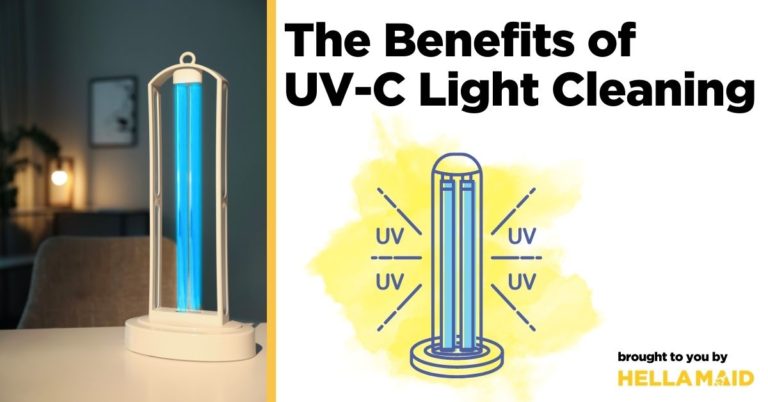Our Uvc Light PDFs
Our Uvc Light PDFs
Blog Article
The Of Uvc Light
Table of ContentsUvc Light Things To Know Before You BuyThe Uvc Light PDFsExcitement About Uvc LightA Biased View of Uvc Light7 Simple Techniques For Uvc LightSome Of Uvc Light
A brand-new type of ultraviolet light that might be risk-free for people took much less than 5 minutes to decrease the degree of indoor air-borne microorganisms by more than 98%, a joint research by scientists at Columbia College Vagelos University of Physicians and Surgeons and in the U.K. has found. Even as microbes continued to be sprayed right into the space, the level remained extremely reduced as long as the lights got on.But until currently these studies had actually only been carried out in small speculative chambers, not in full-sized areas mimicking real-world conditions. In the present research, scientists at the University of St. Andrews, College of Dundee, College of Leeds, and Columbia University evaluated the efficiency of far-UVC light in a huge room-sized chamber with the same ventilation price as a regular home or office (regarding 3 air changes per hour).
The effectiveness of various approaches to minimizing interior infection levels is normally gauged in terms of equivalent air modifications per hour. In this research study, far-UVC lights generated the equivalent of 184 equivalent air exchanges per hour. This exceeds any type of various other approach to disinfecting occupied indoor spaces, where 5 to 20 comparable air adjustments per hour is the very best that can be attained practically.
The Main Principles Of Uvc Light

The primary criteria of UV-C sanitation are wavelength, dose, family member humidity, and temperature level. There is no agreement concerning their optimum worths, yet, in basic, light at a high dosage and a range of wavelengths having 260 nm is favored in a setting at area temperature level with reduced family member moisture. This light can be produced by mercury-vapour, light-emitting diode (LED), pulsed-xenon, or excimer lights.
Likewise, there are health and wellness dangers connected with the UV-C technology when used in the proximity of individuals. UV-C disinfection systems have encouraging attributes and the prospective to improve in the future. Information surrounding the various criteria affecting the technologies' performance in health center setting are needed. For that reason UV-C disinfection need to presently be thought about for low-level instead of high-level disinfection.
Another application developed in 1910 when UV light was made use of to decontaminate water. The innovation was not really reputable at the time and it took better technological advancements prior to UV water sanitation came to be popular once again in the 1950s [ 2] Nowadays, UV light is made use of for water, air, food, surface area, and clinical tools sanitation.
Things about Uvc Light
DNA, RNA, or healthy proteins of a micro-organism take in UV light, with a peak absorbance around 260 nm [6] This results in the disruption of DNA or RNA, resulting in the inactivation of the micro-organism. UV-C-induced DNA disruption often contains the bonding of 2 neighbouring thymine (or cytosine) bases as opposed to the standard linking of a base with its complementary base upon the various other strand.

Dark repair work, on the other hand, requires numerous enzymes and nutrients for energy [6] It is important to recognize whether final inactivation results have actually considered the event of resurgence because it might lead to 60% of the achieved inactivation being turned around [7] Anomalies can develop upon UV-C exposure given that this direct exposure can result in the origination of intra-strand cyclobutyl-pyrimidine dimers in DNA [ 6] The UV-C zone is utilized for disinfection yet there is no consensus on the specific optimum wavelength. Light at 260 nm can cause the most interruption. Various micro-organisms are most prone to a little various uvc light wavelengths.
3 Simple Techniques For Uvc Light
On the other hand, it has technological effects considering that the overall energy of the light beam of light is after that split over all present wavelengths. A micro-organism that is vulnerable to 254 nm light will certainly be inactivated much more by a lamp that emits only light at 254 nm than a light that releases a wavelength spectrum at equivalent overall energy.
Direct exposure times of 1045 min for space disinfection and 25 s to 5 minutes for medical equipment were encountered in literary works. The intensity is vice versa proportional to the squared range between the light and the surface and is for that reason specified at the surface in the dosage computation equation [14]
Better, the result of a lamp lowers over time, so it is recommended to determine the dose at the end of light life, which is rep of a worst-case situation. The dosage likewise affects the amount of photoreactivation.
Zhang et al. observed a modification in UV irradiance of 34% when the RH increased from 50% to 90% [18] The amount of RH influence on UV effectiveness relies on the here and now micro-organism and is a lot more obvious for bacteria than for viruses [16] Lastly, the influence of temperature level depends on the light source.
The Basic Principles Of Uvc Light


This is known as far UV-C innovation and is a reasonably new sanitation approach with restricted expertise concerning its performance.
In study, the results on pulsed versus continual UV-C sanitation effectiveness differ. When contrasting pulsed and constant light it is essential to maintain other variables such as wavelength and dosage continuous.
More About Uvc Light
In case ozone is not needed for sanitation, a customized lamp can be utilized. For mercury-vapour lights, doped quartz glass or specialized soft glass can strain short-wave UV-C light. For pulsed-xenon, doped quartz can be utilized too [30] UV-C has appealing attributes for sanitation such as automatic helpful site disinfection, being much less taxing than widely utilized handbook or chemical sanitations, leaving no hazardous residuals, and being eco-friendly (if no mercury-vapour lamps are made use of) [31,32]
Report this page